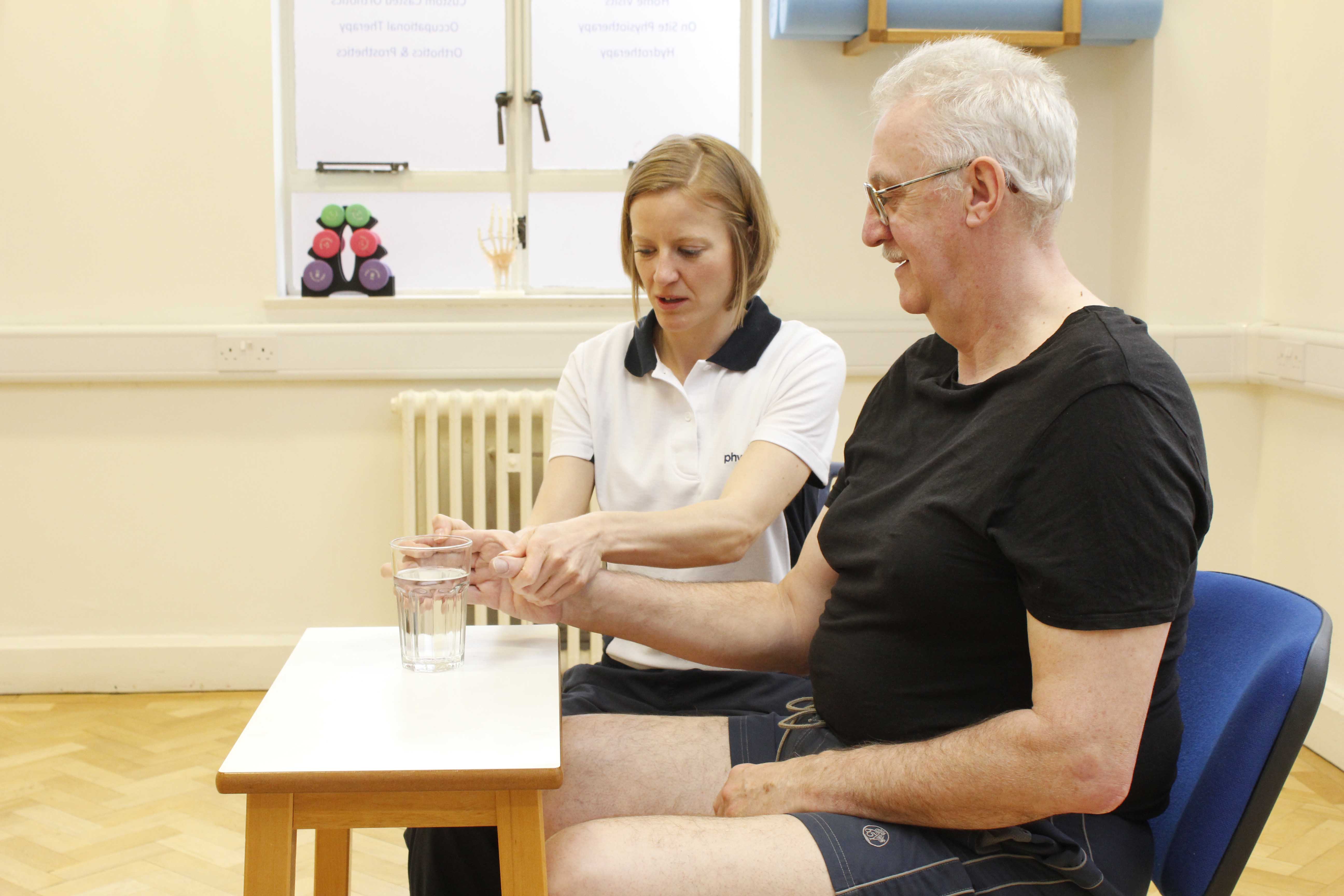 Above: Functional movement rehabilitation exercises supervised by a specialist neurological physiotherapist
Above: Functional movement rehabilitation exercises supervised by a specialist neurological physiotherapistPrinciples of the Brunnstrom approach
The Brunnstrom treatment approach is based around two principles:
1st Principle - Normal movement (how a healthy individual moves) requires muscles working together (synergistically) following damage to the CNS the muscles will not work as well together. During recovery muscles will start working together better.
2nd Principle - Following damage to the CNS, movement recovery follows a specific sequence. The sequence is:
- Immediately after the onset of injury there may be no "voluntary" movement.
- Spasticity (increased muscle tone) appears, basic movement reflexes appear.
- Patient begins to gain voluntary control over their reflexes. This may cause an increase in spasticity.
- Basic movement patterns are developed. This leads to a reduction in spasticity.
As progress continues, more complex movement patterns are learnt and there is a further decrease in spasticity. - Spasticity disappears and individual movements become possible and coordination approaches normal.
- Normal function is restored.
Brunnstrom Treatment
Physiotherapists using the Brunnstrom approved aim to maximise recovery and restore normal function as soon as possible following an injury to the CNS. Treatment includes:
- Encouraging whatever movement is possible and building on it, through; strengthening, sensory stimulation, positive reinforcement, verbal feedback, and the use of reflexes.
- Treatments will involve tasks that are difficult but achievable. As soon as the task is achieved new goals will be set. Patients are taught to use the voluntary movement that is available to them to achieve goals / tasks.
- Movement will be progressed in the correct sequence. Abnormal movement always comes first following injury and there is a normal pattern of recovery before normal patterns of movements are obtained. The Brunnstrom approach acknowledges that before normal movement can be restored there will be a period of abnormal movement. It is the job of the physiotherapist to get their patients through the stages of abnormal movement to achieve normal movement and function.
Benefits of the Brunnstrom approach
The Brunnstrom approach emphasises the ability to recover normal movement by facilitating reflexes, basic muscle synergies and sensory stimulation. This type of treatment will help:
- Increase muscle strength
- Stretch tight muscles
- Regain motor control
- Recover voluntary movement
- Improve functional tasks such as sit to stand, walking, reaching, grasping and hand to mouth
- Improve the sequence of functional activities in order to achieve a specific aim
- Improve posture
- Increase independence


0 Comments